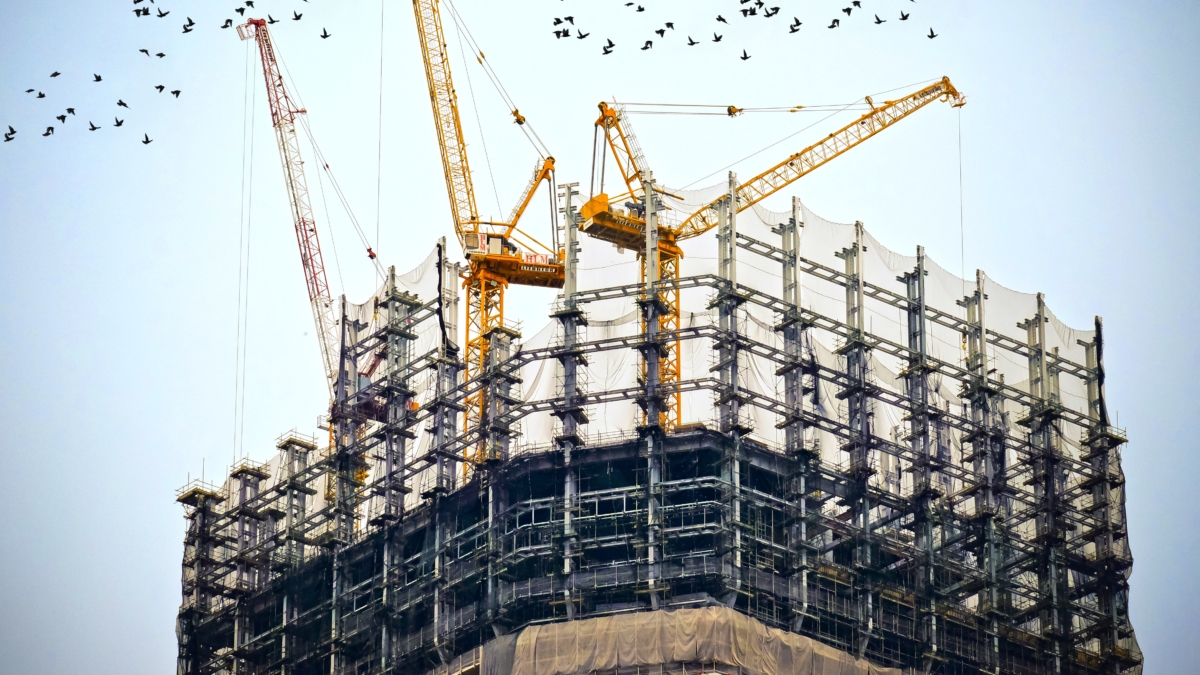
AI Driven Construction Management for Clients & Main Contractors – Predicting delays, budget overruns and incorrect estimates
There is a lot of talk around Machine Learning (ML) and AI within construction management. However, while the possibilities seem endless, if you look under the hood of most organisations the reality of applied AI and ML looks very different. In recent years, the pace at which technology has evolved has far outstripped organisations ability to adopt technologies.
While every article on the build sector seems to paint a picture of a modern construction site managed by a handful of highly skills engineers commanding an army of drones and robots, projects today are still where they were 10-15 years ago. Paper-based plans, workers sitting around waiting for instructions or supplies and changes/errors eating up valuable time and resources while main contractors and clients helplessly watch their budgets and margins disappear from the sidelines.
We won’t go into all the issues which plague the construction sector (you can read about it here), instead this article focuses what you can do about it.
Construction management
Construction has only one key issue when it comes to using its data – it doesn’t. While adjacent industries have embraced data to automate and improve, the build sector has stood still. The power of data is undeniable and the benefits resulting from the smart use of data are enormous.
We are going to explore how AI can be used in construction management today, by examining the portfolio of planned not started (PNS), in-progress and completed construction contracts by the New York City School Construction Authority (SCA), which is based on a publicly available data set via NYC Open Data.
The portfolio consists of 6,027 contracts, with their respective budgets, dates and completion information (if completed).
As most organisations in the build sector, SCA has several challenges which revolve around maximising use of capital and creating value for its stakeholders and the public. To achieve its objective it’s critical to master several disciplines such as effective working capital management by accurately estimating project budgets, eliminating delays to mitigate project risks and ensure on-time project delivery which results in projects being delivered on-time and on-budget.
Analysing data of thousands of contracts awarded by SCA shows that a large proportion of projects in the portfolio are far over-budgeted, and meanwhile, a significant proportion of contracts experienced delays with budget overruns.
AI Driven Construction Management for Clients & Main Contractors
We implemented an unsupervised learning algorithm which took into account variables – such as project size, phase, district and status – to predict which contracts have a high probability of being delayed. Importantly, we were not only able to identify high risk contracts within the portfolio, but also those contracts that had yet to start.
We are able to generate important insights into the contract portfolio with a minimum input of data, the entire model only takes into account 5 variables due to limited data availability. We are able to generate these detailed insights by using a classification algorithm which detects trends and patterns within the data which identify whether a project will be affected by any of the three risks.
To visualise the results, we published the results in Google Data Studio.
Using our model we are able to give probabilities for each risk by project building, giving highly detailed insights into the contract portfolio. Using the filters on the dashboard, clients and main contractors can drill down further into the portfolio to understand different trends in more depth.
Using a powerful machine driven insight capability allows clients and main contractors to manage risk more actively by identifying risks before they have impact a project. For projects in-progress, these insights can be mission critical.
Digging even deeper, we found that risk in the contract portfolio is concentrated within specific phases of the project, giving clients and contractors the ability to make the insights actionable. From the dashboard below, we can identify that the three risks affect different phases of projects, and by using the year filters we see that the affected phases vary by year. Even for the best organisations in the industry struggle to manage dynamic risks because it is very difficult to understand it’s patterns. Using machine learning we can create early warning analytics which automate the detection of risks and make it available in a clean, user-friendly dashboard for users to take action.
Conclusion: AI in practice
A common pitfall for organisations across all industries is their inability to make insights actionable. Now that we understand where risk is accumulated in our portfolio, we can ask ourselves, what is required to mitigate those risks? In this example, we’d advise clients to take preventive action to risk mitigation by:
- Setting up early warning analytics which monitor contracts on an on-going basis and flag risks as soon as they are detected so the relevant business units can intervene and work collaboratively to eliminate said risk
- Undertaking in-depth analyses to clearly identify the origin of issues is critical, applying a temporary fix often shifts the problem into a different part of a contract/project and it resurfaces at a later stage
- Sharing insights within the organisation, partners and contractors increases transparency and allows for a more productive dialogue between stakeholders
- The setup of a special task-force focused on resolving critical challenges and implementing changes has been proven to drive significant benefits
In conclusion this post is designed to illustrate that AI today is not about robots and drones replacing humans all together but rather using AI to help us see trends and patterns which aren’t visible to the human eye to better do our jobs. Starting the AI journey is critical for organisations in the build sector, because of it’s enormous benefits.